| |
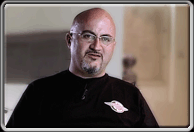 |
 |
A fan of the cinema and contemporary history, Livio Lodi began
his adventure with Ducati in far off 1987 as a worker, assembling motorcycles on the production line. Tied to Ducati and Borgo Panigale by a strong family connection, over the years he has become the Bolognese manufacturer’s historical export, a true “archaeologist” of Ducati history. |
| |
|
|
|
| |
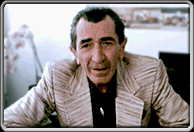 |
 |
After previous experience as a designer for the Ceccato and Mondial, in 1954 Fabio Taglioni decides to work exclusively for Ducati. From that moment on, until his retirement in 1984, the lughese engineer developed over a thousand projects, creating, among others, the three bench marks of Ducati’s present technical philosophy: the desmodromic system, the twin cylinder engine and the trellis frame. |
| |
|
|
|
| |
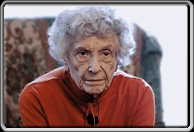 |
 |
Norina Taglioni (wife of Fabio Taglioni) shared sixty years of her life with the engineer who literally transformed Ducati. With a slight frame but strong personality, she was Taglioni’s shadow during his whole career at the company. Her excellent memory has allowed us to relive the most significant moments that led to Taglioni becoming
a motorcycling myth. |
| |
|
|
|
| |
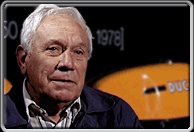 |
 |
Giuliano Maoggi, pleasant Florentine rider, is one of the myths of Ducati history and today, still takes part in commemorations of historical races, notwithstanding his over eighty years of age.
Official Ducati rider in 1955 and 1956 and winner of the 1956 Motogiro D’Italia, he was one of the team’s aces that routed the competition in the Gran Fondo races, seated upon the “Marianna”
that Taglioni developed specifically for riders like him. |
| |
|
|
| |
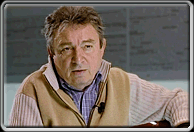 |
 |
The figure of Franco Farnè is closely tied to the history of Ducati and that of Fabio Taglioni. Entering the company in 1951, taking the place of his mother, Farnè was from the outset a courageous rider on both road and track before becoming the undisputed head mechanic from 1959 to 1999. The authentic arm of the “Taglioni mind”, at his side, dozens of riders began careers that then became important chapters in the history of competition. |
| |
|
|
|
| |
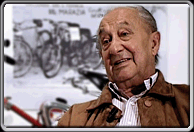 |
 |
| Mario Recchia came to Ducati in 1943. Immediately after the war he began work as a mechanic and test rider for the first Cucciolo examples, also gaining the first victories in competitions for the new micromotors. He was also one of Ducati’s best mechanic-riders, taking part in the “Marianna“, the Motogiro d’Italia and the Milano-Taranto between 1955 and 1957. |
| |
|
|
|
| |
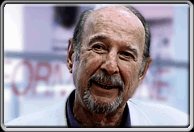 |
 |
| Winner of the first running of the Motogiro d’Italia in 1953 and Ducati rider from 1955 to 1957, he used his experience not only on the first “Mariannas”, but was one of the technicians that, together with Taglioni, developed the first Grand Prix bikes equipped with the desmodromic system. With his career over after an accident, together with Giorgio Monetti, he was the promoter of the 1957 round the world project seated on a Ducati and, later, founded the Italjet motorcycle company. |
| |
|
|
|
| |
 |
 |
| Head of Ducati foreign sales during the 50s, this is the man who introduced Mike Hailwood to Ducati. Friend and adventure companion of Leopoldo Tartarini, the two courageous riders travelled the globe’s most impassable roads during the round the world, aboard two Ducati 175s. The round the world lasted twelve months and became one of the most significant promotional tools for the Borgo Panigale manufacturer, allowing Ducati bikes to also be appreciated on overseas markets. |
| |
|
|
|
| |
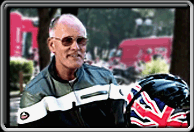 |
 |
| Cathcart, long time tester and journalist, is one of world’s greatest experts regarding motorcycling and all the manufacturers. With his years of experience and friendship developed with Taglioni, he recounts how and why the desmodromic system has become a point of reference in modern engineering and the reasons behind its many successes. |
| |
|
|
|
| |
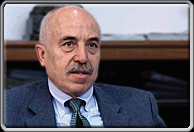 |
 |
Gianluigi Mengoli, “Gigi” to his friends, entered Ducati in 1970. Over the course of his forty-year experience he flanked Taglioni as a true disciple, actively collaborating in the development of the Pantah engine; in 1986, helped by engineer Massimo Bordi, he gave birth to the four-valve engine, the Desmoquattro. |
| |
|
|
|
| |
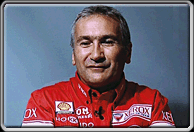 |
 |
| Davide Tardozzi represents one of Superbike’s historical figures. Manager of some of the greatest riders in the series bike championship, Davide linked his name to Ducati initially as a rider in the early 80s before then managing riders the calibre of Fogarty, Bayliss, Corser, Hodgson and Toseland. |
| |
|
|
|
| |
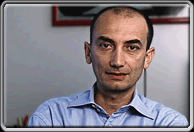 |
 |
Together with Filippo Preziosi, Claudio Domenicali is part of the “new age” of Ducati designers, ideal disciples of Taglioni, Mengoli and Bordi. The young Bolognese engineer begins work at the end of the 80s and quickly becomes one of the pivotal points of the new Ducati; he designs the Supermono and later takes the helm of Ducati racing. |
| |
|
|
|
| |
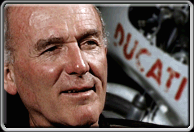 |
 |
The story of how Paul Smart became the hero of the Imola 200 Miglia is extraordinary. Taken on by Ducati to compete in the race (thanks to a phone call to his wife Maggie), the English rider crossed the ocean to ride a bike that he had never heard of before. On his birthday, he took part in the 200 Miglia riding a Ducati 750 with which he won the race after a breathtaking finish. |
| |
|
|
|
| |
 |
 |
“Lucky” and “Crazy Horse” are only some of the nicknames that identify the strong character of the La Spezzia rider who, in 1985, started riding in some races with the Ducati 750 F1. In 1986 he won the “Battle of the Twins” at Daytona with this bike and, again the same year, began the adventure with the four-valve engine at “Bol D’Or”.
In 1998, Lucchinelli triumphed in the historic first Superbike race at Donington, almost winning the rider’s title in 1989 with
the 851. |
| |
|
|
|
| |
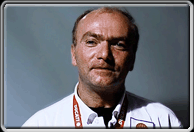 |
 |
Better known as the “Jesi lion” and almost twenty years after his retirement from competition, Giancarlo Falappa is still considered one of the Ducati fans’ favourites. Fast, courageous and generous, Falappa was one of the Italian riders who won the most Grands Prix in the first years of the SBK World Championship. |
| |
|
|
|
| |
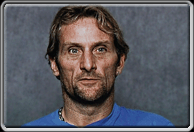 |
 |
“King Carl” is the rider who has won the most titles in the production bike championship. Superbike winner in 1994, 1995, 1998 and 1999, he indissolubly bound his name to the 916, the most beautiful bike ever created by the Borgo Panigale manufacturer and authentic milestone in the history of modern motorcycling. |
| |
|
|
|
| |
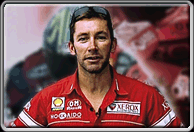 |
 |
| The easygoing Australian rider is universally considered one of motorcycling’s greatest champions. Summoned to substitute Carl Fogarty in 2000, he immediately becomes the favourite of Ducati fans. With the Borgo Panigale bike, Bayliss will become SBK world champion in 2001, 2006 and 2008. |
| |
|
|
|
| |
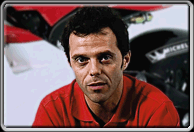 |
 |
| In 2002 Ducati decides to embark on the most ambitious project in its history: participation in the MotoGP championship. The Borgo Rivola rider is employed in 2003 and over four years Loris will accompany the Ducati racing team in the development of the Desmosedici, the bike with which Ducati began this adventure. |
| |
|
|
|